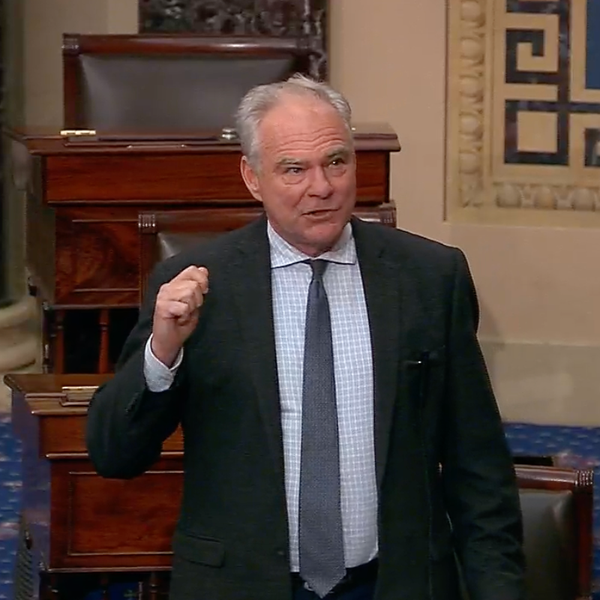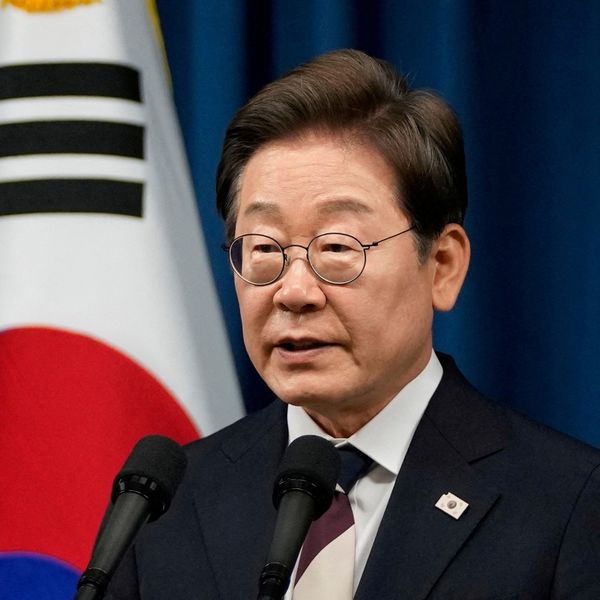Vice President Kamala Harris last week visited the Philippines, pledging more aid money and proposing expanded military cooperation.
“As an ally, the United States stands with the Philippines in the face of intimidation and coercion in the South China Sea,” said Harris. This is “an unwavering commitment,” she added, which comes on top of $100 million in foreign military sales financing announced last month.
The relationship between the U.S. and Philippines is recovering from the presidency of the irascible Rodrigo Duterte, who was uniquely antagonistic toward Washington. His successor, President Ferdinand Marcos, Jr., has returned the Philippines to its more traditional pro-American stance.
Although Washington’s presumption is that closer bilateral cooperation will enhance U.S. security, Manila brings to mind the doddering Austro-Hungarian Empire, which left Germans convinced that Wilhelmine Germany was “shackled to a corpse.” The problem begins with Filipino politics — ever corrupt, dynastic, unstable, and unpredictable. Marcos is the son of the former dictator by the same name, who was ousted in 1986. Duterte openly dallied with the Chinese. He then became a China hawk, despite the Philippines’ lack of a serious military.
Two decades ago Defense Minister Orlando Mercado observed that his nation had “a navy that can't go out to sea and an air force that cannot fly.” Not much has changed since then. Last year Manila’s armed forces spent $5.65 billion. The navy has two frigates and 58 patrol and coastal combatant ships; the latter was down by two from 20 years before. The number of combat capable aircraft had increased by two, to 49. There were 76 operable helicopters. The Philippines also had six unmanned aerial vehicles.
The International Institute for Strategic Studies has observed: “Despite modest increases in defense funding, mainly in response to the growing challenge posed by China to Philippine interest in the South China Sea, the capabilities and procurement plans of the Armed Forces of the Philippines (AFP), which have traditionally focused on maintaining internal security, remain limited.”
This isn’t much to hold off the Chinese colossus. Beijing spent some $270 billion last year. It deploys 86 surface ships, including two rudimentary aircraft carriers, along with 59 submarines. China’s air force has 2475 aircraft. The military gulf between the Philippines and PRC is vast.
Which explains why the latter can bully Manila with impunity. Last year Beijing parked its fishing fleet in disputed waters. Before that China seized Mischief Reef and added an artificial island and airfield. The PRC later grabbed Scarborough Shoal, ejecting Filipino fishermen. At the time the Philippines called Washington an “unreliable ally” for declining to confront Beijing.
So far, the U.S. has avoided conflict. After a Chinese ship hit and sank a Philippine fishing boat in June 2019, Duterte announced that “I am invoking the RP-US pact, and I would like America to gather their Seventh Fleet in front of China.” What then? “When they enter the South China Sea, I will enter. I will ride with the American who goes there first. Then I will tell the Americans, ‘Okay, let’s bomb everything’.”
Washington ignored his ravings, even though only four months earlier Secretary of State Mike Pompeo had promised that “Any armed attack on Philippine forces, aircraft or public vessels in the South China Sea will trigger mutual defense obligations.”
Apparently, the administration realized that turning the decision for war with Beijing over to the unbalanced leader of a semi-failed state was a bad idea.
The U.S.-Philippines relationship has oscillated over the years. Washington granted the archipelago’s independence in 1946. The Mutual Defense Treaty came in 1951. Manila forced the U.S. out of Clark Airfield and Subic Bay in 1991 and 1992, respectively. The two governments renewed military ties in 1998 with a Visiting Forces Agreement. In 2014 came the Agreement on Enhanced Defense Cooperation, which covered equipment and financial aid.
Washington currently has access to five Filipino bases but wants more. In September Manila’s ambassador to the U.S., Jose Manuel Romualdez, said his nation expected to implement such plans within three years. “This is really a big deal and a big shift from where the alliance was,” said Aries Arugay, of the University of the Philippines Diliman. “It shows that the U.S. is really eyeing the Philippines as a critical part of its geopolitical strategy in the Indo-Pacific.”
Sparring between Manila and Beijing has sometimes been intense, so the former is pressing Washington to stretch America’s security guarantee to cover contested rocks and waters. For instance, after the sinking of the Filipino fishing boat, Duterte said: “A shooting war is a grief and misery multiplier. War leaves widows and orphans in its wake. I am not ready or inclined to accept the occurrence of more destruction, more widows and more orphans should war — even at a limited scale — break out.” However, good sense went out the window when he realized that he might be able to borrow the U.S. navy, proposing to mimic Major Kong in riding the nuclear bomb to its target in the movie Dr. Strangelove.
Marcos is more measured than his predecessor but also is determined to resist Chinese encroachments. In July he declared: “I will not preside over any process that will abandon even one square inch of territory of the Republic of the Philippines to any foreign power.” The question, however, is what navy will protect that territory? Certainly not the Philippines’ force.
Unfortunately, the U.S. appears prepared to back his stance. Last year amid Manila’s naval contretemps with China, State Department spokesman Ned Price said: “An armed attack against the Philippine armed forces, public vessels, or aircraft in the Pacific, including in the South China Sea, will trigger our obligations under the U.S.-Philippines Mutual Defense Treaty.” That is, war. Harris’ comments were less specific but seemed equally assertive.
The Philippines well illustrates the risk of applying antiquated defense guarantees to dramatically new circumstances. There is talk of forging a more equal partnership, but all Manila can offer is base access. And there is no guarantee that in extremis, a future Philippine government would give Washington what it most wants, support in a conflict with China over Taiwan.
The Philippines’ relative proximity to Taiwan would make the former a valuable staging ground for U.S. military action but also a prime target of Chinese military retaliation. In a recent interview, Romualdez said Manila would help America — but only “if it is important for us, for our own security.” Which sounds like a nonstarter. No wonder he urged diplomacy between Washington and Beijing, since “Nobody wants to have any kind of war or confrontation.”
America’s military departure from the archipelago three decades ago was long overdue. The “mutual” defense pact — Manila’s only obligation is to agree to be defended — should have been terminated as well. The Philippines is not necessary to defend the U.S. An American military presence would help constrain PRC maritime operations and buttress Manila’s control over some fishing and hydrocarbon resources, but neither is worth war.
Moreover, any Philippine government is likely to view not joining America in a conflict with China to be most “important” for the Philippines’ security, as Romualdez put it. Fighting would make Manila a permanent enemy of its large neighbor. And U.S. forces will eventually go home, out of fiscal necessity if nothing else.
Washington has an interest in the Philippines’ independence, but that has not been threatened by the PRC. Preserving Manila’s control over contested territory essential neither to it nor America does not justify war. Washington should shift toward a looser collaborative relationship with Manila, while eliminating the formal defense guarantee that puts America on a potential collision course with China. With Washington’s assistance, the Philippines should expand existing and forge new security relationships with its neighbors. Multilateral military cooperation emphasizing anti-access/area denial capabilities could raise the price of Chinese adventurism even without America’s presence.
Before leaving office, Duterte declared: “our country cannot forever rely on other countries for the defense of the state.” He was right. Instead of seeking to revive the alliance, Washington should transform the pact, shifting military responsibilities onto Manila. As the world has changed, so should the U.S.-Philippines relationship.















